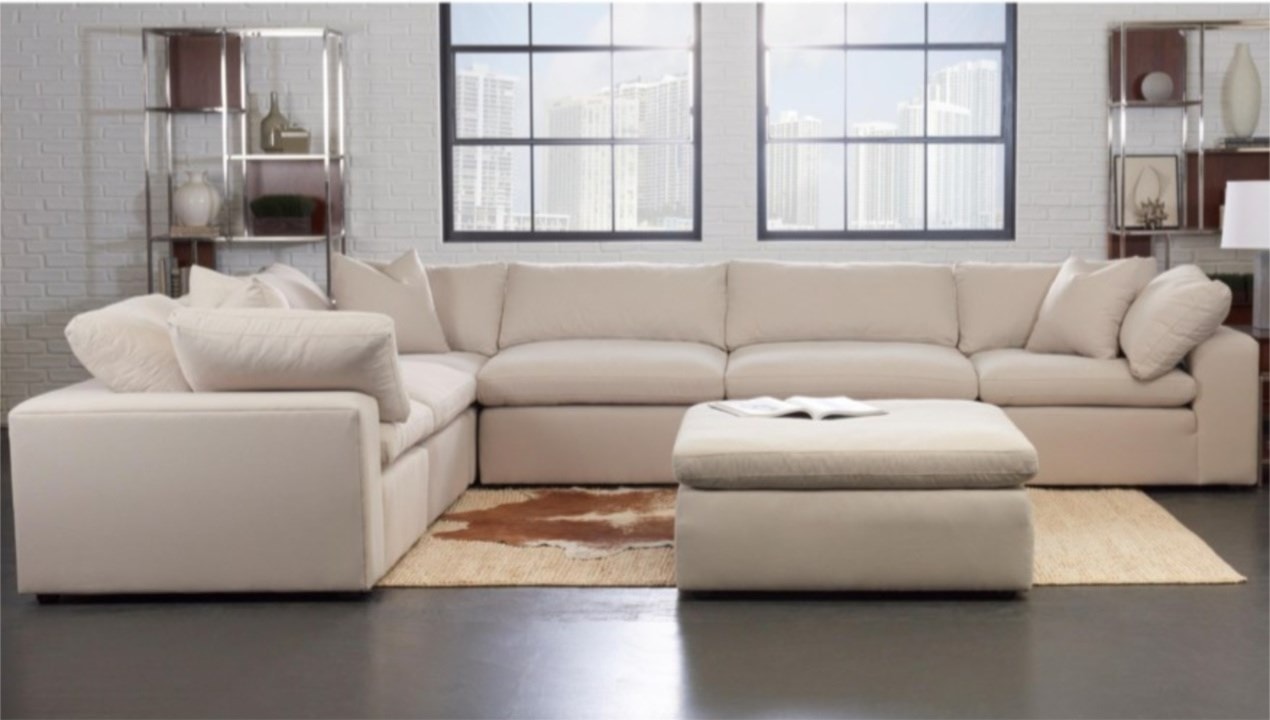
Sofa Backrest Guide
by Nick, Digital Specialist | June 10, 2020
When choosing a new sofa, one deciding factor can be the style of the back cushion. Which style is best for you?
There are a ton of different design details that help distinguish one sofa from another. Depending on the client, some of these details can be very important to someone, while others might not matter so much. These priorities can vary from person to person, often depending on a client’s personal taste or differences in how a couch might be used. One of these design details is the backrest of the sofa. The backrest contributes to the overall style of the sofa, but also has some practical implications as well. Let’s check out some of the differences:
Semi-Attached vs. Loose Back vs. Tight
We find that some customers feel very strongly about this. Many modern sofas have semi-attached backs, meaning there’s a back cushion that’s sewn onto the frame of the couch. Our clients tend to prefer this for its clean, tidy look and low maintenance. The biggest downfall with this is that the stitch that holds the cushion to the frame will occasionally rip, especially with heavy use or kids and pets. If you’re going to be rougher on the furniture, you may want to consider a loose-back cushion, where the back cushion isn’t attached to anything- you can literally throw them on the floor if you wanted. This is usually associated with more of a casual, lived-in look. You don’t have to worry about the cushions ripping off the back of the couch, but these will require a little more maintenance and fluffing to keep them looking their best. Another option is the tight back, where there is no separate cushion. In this case, the back cushion is actually attached right to the frame. This can feel a little firmer against your back, but doesn’t come with any of the maintenance of the other styles.
Box Cushion vs. Knife-Edge
This has to do with the tops of the back cushions. As the name implies, a box cushion will be shaped like, well, a box. Its square shape lends itself to a neater, cleaner appearance, while a knife-edge cushion only has one edge to it. The corners to a knife-edge cushion can be finished one of two ways- they can either be tucked in and pleated, which makes it look a little more tailored, or left at a point like a bed pillow, which makes it look more casual and comfortable.

Welt vs. Stitch
A welt is a raised, fabric-covered cord that follows any seams on a piece of furniture, white a stitch (sometimes called a baseball stitch) keeps the seams flat. Welting can sometimes help a cushion hold its shape for longer as it adds some strength, even though it may not always appear perfectly straight. While it’s common for welting to be the same color as the rest of the couch, sometimes it can be a contrasting color for an extra pop. Stitching is a huge part of leather furniture, and may not always be the same color as the rest of the fabric.
Bagged vs. Loose
This refers to how the back cushions are filled. Sometimes, the filling is just loose pieces of batting, while some higher-quality sofas will actually put the filling in a bag before stuffing it into the cushion. As a preventative measure, some manufacturers even separate the bags into narrow channels, limiting the amount that the filling can travel and keeping it looking great.
Back Cushion Maintenance
No matter what kind of back cushion you have on your sofa, it will stay looking its best for longer if you actively work to maintain its shape. Run you hand along the bottom side of the cushion and feel for a zipper. You can unzip it and get your hands into the cushion and move the filling around as necessary, keeping it from sagging or drooping. The manufacturers put the exact amount of filling that’s supposed to be in there- too much can weigh the cushion down and compromise the seams. Rather than overstuff them, it’s definitely better to spend a few minutes fluffing the cushions to keep them looking their best.

BROWSE BY TAG:
ALL CATEGORIES:
MOST POPULAR:
MOST RECENT:





